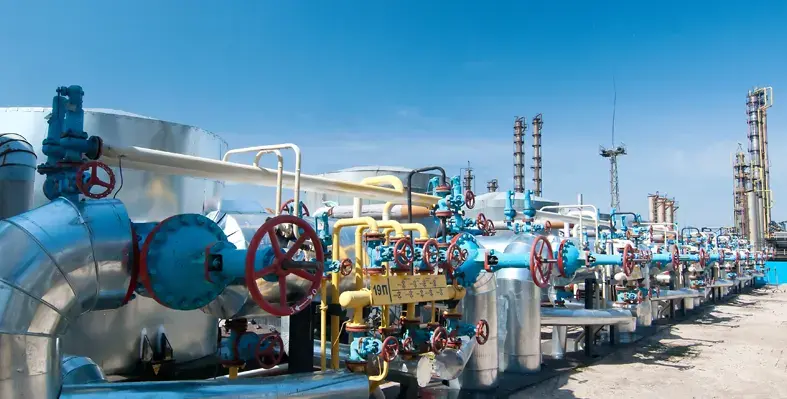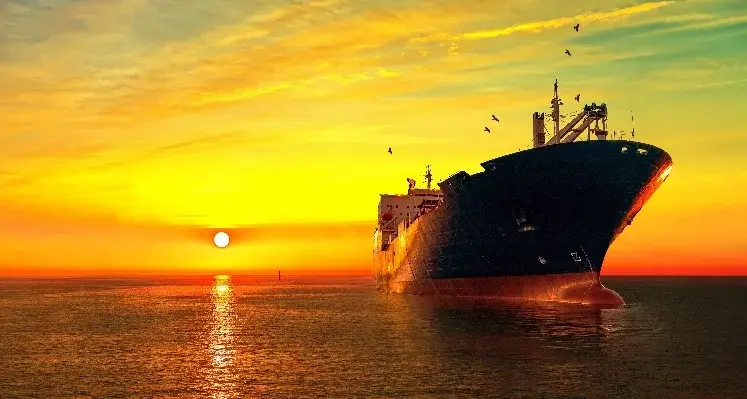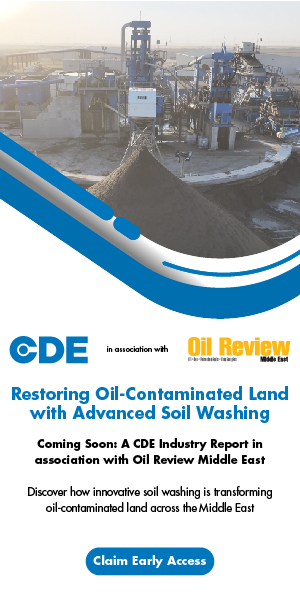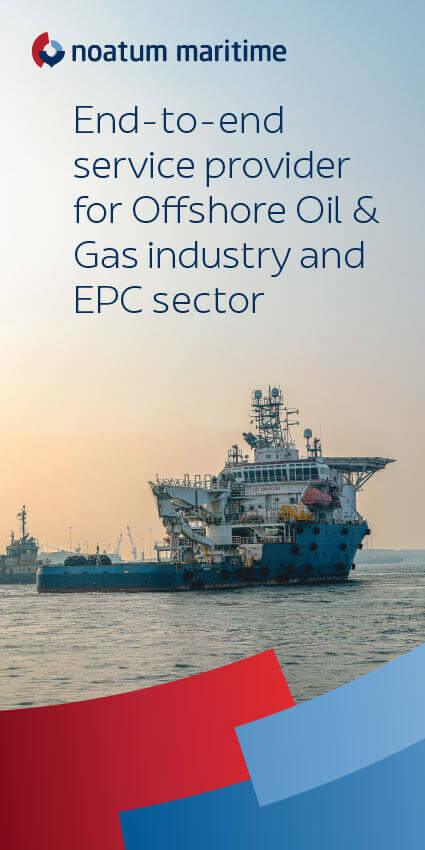In The Spotlight
Wael Radwan, director, software and control and intelligent devices for Middle East, Türkiye and Africa at Rockwell Automation, highlights the shift to targeted digitalisation that delivers measurable ROI and enables future-ready autonomous operations
In a sector accustomed to long project timelines and substantial capital outlay, Middle East oil and gas operators are now applying even more strict investment discipline. Digital initiatives must demonstrate their value through clearly defined returns, not merely conceptual promise. Every project must now serve a multi-dimensional purpose, supporting profitability, reducing emissions, strengthening compliance and enhancing resilience. A digital solution that cannot fulfil those aims does not survive the business case. In contrast to earlier waves of digital adoption which were about exploring potential, what matters now is performance, efficiency and bottom-line value. Pilots and proof-of-concept studies have become essential tools for determining the viability of new technologies. If the data does not back the decision, the deployment does not proceed.
One recent successful pilot, undertaken by a national operator in the Gulf, trialled model predictive control (MPC) in a brownfield upstream facility to improve energy utilisation, opening the door to broader autonomy discussions across the asset portfolio. These pilots are now becoming the currency of confidence, demonstrating value in operational terms before scaling further.
From automation to autonomy
Automation has long been embedded across the Gulf's oil and gas infrastructure, but the future lies further along the spectrum, with autonomy, which represents a strategic response to some of the region's most pressing operational challenges. Remote assets, hazardous environments and constrained technical labour pools all favour solutions that reduce reliance on human presence.
Unmanned operations are no longer an aspiration; they are entering deployment. In one offshore pilot, an autonomous robot has been deployed to monitor pipeline integrity, replacing routine manual inspection. The robot patrols assigned zones, records video and sensor data, and integrates this information into the control system, eliminating the need for helicopter-supported human intervention. The cost and safety implications are profound.
In another case, robotics is being tested in high-temperature process units where human access is restricted. Temperatures exceeding 500°C and strong electromagnetic fields make maintenance work dangerous and infrequent. By using robotic platforms coupled with intelligent control software, inspections are being conducted without shutdown, significantly improving equipment uptime and reducing operational risk.
This step change from automation to autonomy is underpinned by increasingly sophisticated digital architectures. It is no longer just a matter of automating manual steps. It requires systems capable of interpreting alarms, predicting failure modes, and executing closed-loop responses without human command. These are currently being piloted, with the Middle East's largest operators leading the charge.
Data without context is not intelligence
The foundations of autonomy, and indeed all ROI-based digitalisation, depend on the ability to contextualise data. Oil and gas assets generate enormous volumes of sensor, process and transactional data. But raw data is not intelligence. It must be connected, contextualised and made accessible across operations. Contextualised data is the enabler of predictive asset strategies, advanced planning models and autonomous control.
Many Gulf operators still contend with fragmented data environments. OT and IT systems remain siloed. Cloud strategies are currently under development but not yet universally adopted. This fragmentation impedes predictive maintenance, slows root-cause analysis and creates decision-making bottlenecks.
To address this, operators are investing in unified data platforms that consolidate operational and enterprise data into a single, structured layer. A major pilot project underway in the UAE involves aggregating data from multiple upstream installations into one real-time environment. The aim is to transition from a system of fragmented visibility to one of integrated insight, where data from production, maintenance, energy management and logistics can be analysed collectively to drive better outcomes.
Trust is also evolving. Historically, there was deep scepticism toward cloud-hosted industrial data. Concerns around ownership, security and transparency were barriers to adoption. That resistance is diminishing. Operators are becoming increasingly comfortable with the idea that cloud platforms can offer not only flexibility and scalability but also security and control, provided that governance frameworks are in place.
Consultancy over technology
The shift from trend-based to outcome-based digitalisation has also reshaped how technology is delivered. There is growing recognition that digital tools are only as effective as the strategies behind them. This has driven increased uptake of digital consultancy services, where solutions are co-designed with operators around their specific goals, asset constraints and regulatory context.
For oil and gas producers in the Middle East, this consultancy-led approach is proving essential. The region's operators face unique challenges, including environmental, geopolitical, and infrastructural ones, and there is no single blueprint for transformation. Effective digitalisation must be locally informed and globally benchmarked.
Recent engagements have focused on redesigning operations around ROI-centric principles. Rather than starting with a technology suite, consultants begin with operational KPIs, production targets, energy efficiency thresholds, and maintenance budgets and work backwards to identify the digital tools that best support those goals. This approach avoids over-investment, accelerates value and reduces resistance among internal stakeholders.
Energy management is a key area where consultancy is delivering results. By applying machine learning and data modelling to existing instrumentation data, operators are identifying inefficiencies previously hidden in the noise. The result is not just reduced energy expenditure but also improved emissions performance and enhanced reporting capabilities for regulators and investors alike.
As these digital strategies mature, modular platforms are allowing operators to scale their transformation gradually, starting with monitoring, progressing to analytics and ultimately embedding AI in control decision-making. This staged approach supports faster ROI realisation while building the digital confidence needed for more ambitious moves toward autonomy.
ROI is the new currency of transformation
Flashy dashboards, pilot projects with unclear value, or technology for its own sake no longer pass muster. Every deployment must deliver clear, measurable outcomes. ROI is not a hopeful result, it is the starting condition.
The operators that will thrive in this next phase are those that treat digital not as a silver bullet but as a structured discipline. They will define business objectives first, validate solutions through field-tested pilots, and scale only what works. They will integrate data at every level, automate where it makes sense, and explore autonomy where it drives true business advantage. They understand that smarter production and faster payback are not just aspirations; they are realities and requirements. And they are achievable if you start with value and build from there.
Farabi Petrochemicals Company has inaugurated its fourth integrated Linear Alkyl Benzene (LAB) plant in Saudi Arabia
The US$950mn state-of-the-art facility, located in Yanbu Industrial City, adds 120,000 metric tons per year of LAB capacity. Built adjacent to Aramco’s refineries, the plant leverages locally produced kerosene and benzene feedstocks, ensuring world-class integration, efficiency, and sustainability performance.
The new plant underlines Farabi’s commitment to Saudi Arabia’s Vision 2030 objectives of downstream diversification, localisation and GDP growth.
The company also signed a new Memorandum of Understanding (MoU) with Unilever to expand their 20-year strategic partnership. Unilever is the world’s largest buyer of LAB, a key ingredient in household and industrial cleaning products.
The expanded agreement aligns Farabi’s capacity growth with Unilever’s constantly growing global demand in home care products, supporting innovation and sustainable growth. Both companies expressed confidence that this deepened collaboration will generate long-term value and advance their shared sustainability goals.
Eng. Mohammed Al Wadaey, CEO of Farabi Petrochemicals Group, said, “Farabi Petrochemicals is proud to be the world’s largest producer of LAB and NP which is the result of consistent growth, product diversification, advanced industrial infrastructure and dedication of our talented employees. We actively support Vision 2030 driving economic diversification, creating job opportunities, contributing to Saudi Arabia’s position as a global industrial hub, while maintaining a positive impact in the environment.”
Egypt’s oil and gas exploration capabilities are taking a step forward with the first-ever deployment of cutting-edge nodal technology for onshore seismic acquisition
Leading exploration services company ARGAS has purchased 30,000 Range+ STRYDE nodes and STRYDE’s Nimble Seismic System. These will be deployed on a very large 2D seismic survey in Egypt to acquire high-quality seismic data across highly prospective sedimentary basins, supporting oil and gas exploration efforts in one of Egypt’s most promising frontier regions.
The ultra-lightweight Range+ nodes, coupled with a state-of-the-art, high-capacity charging, harvesting, and QC ecosystem, enable thousands of nodes to be rotated daily.This ensures faster acquisition cycles and rapid delivery of high-quality seismic data, giving ARGAS a competitive edge in Egypt’s rapidly evolving energy sector.
“After working with STRYDE’s system on previous projects, it became clear that this technology brings a significant advantage to both us and our clients,” said Soufiane Azzi, Director of Commercials and Collaborations of ARGAS. “The system has proven to drastically reduce deployment time, reduce headcount and vehicles count, simplifies logistics, improve recording time window, and delivers excellent seismic data. We are proud to be the first to bring node technology to Egypt.”
“This is a major milestone, not only for STRYDE and ARGAS, but for Egypt’s energy sector as a whole,” said Mehdi Tascher, sales director at STRYDE.“ARGAS’s purchase is spot on, and reflects the growing demand for scalable and efficient seismic acquisition systems that enable high-density data capture for superior subsurface imaging, empowering more confident and informed exploration decisions.”
-

Exclusive Interview with Maurits van Tol, Johnson Matthey
-

GPT Industries - Iso-Smart
-

ADIPEC 2024 - Exclusive Interview with Joseph El Bitar, Hexagon
-

ADIPEC 2024 - Exclusive Interview with Alexander van Veldhoven, Bapco Energies
-

ADIPEC 2024 - Exclusive Interview with Friedrich Portner, Safeen Group
-

ADIPEC 2024 - Exclusive Interview with Kevin Brilz, Fishbones
-

ADIPEC 2024 - Exclusive Interview with Mohamed Malak, Fishbones
-

ADIPEC 2024 - Exclusive Interview with Dileep Divakaran, SLB
-

ADIPEC 2024 - Exclusive Interview with Eric Kjol, SLB
-

ADIPEC 2024 - Exclusive Interview with Dmitry Shubenok & Aleksandr Dolgikh, North Side
-

ADIPEC 2024 - Exclusive Interview with Adam Stephenson, AkzoNobel
-

ADIPEC 2024 - Exclusive Interview with Frazer Young, Oil States
-

ADIPEC 2024 - Exclusive Interview with Peter Foith, CS Combustion Solutions GmbH
-

Exclusive interview with Maurits van Tol
-

Rockwell Automation interview with Sebastien Grau
-

Rockwell Automation interview with Michael Sweet
-

ADIPEC 2023 - Exclusive interview with Wissam Chehabi, Fishbones
Egypt’s oil and gas exploration capabilities are taking a step forward with the first-ever deployment of cutting-edge nodal technology for onshore seismic acquisition
Leading exploration services company ARGAS has purchased 30,000 Range+ STRYDE nodes and STRYDE’s Nimble Seismic System. These will be deployed on a very large 2D seismic survey in Egypt to acquire high-quality seismic data across highly prospective sedimentary basins, supporting oil and gas exploration efforts in one of Egypt’s most promising frontier regions.
The ultra-lightweight Range+ nodes, coupled with a state-of-the-art, high-capacity charging, harvesting, and QC ecosystem, enable thousands of nodes to be rotated daily.This ensures faster acquisition cycles and rapid delivery of high-quality seismic data, giving ARGAS a competitive edge in Egypt’s rapidly evolving energy sector.
“After working with STRYDE’s system on previous projects, it became clear that this technology brings a significant advantage to both us and our clients,” said Soufiane Azzi, Director of Commercials and Collaborations of ARGAS. “The system has proven to drastically reduce deployment time, reduce headcount and vehicles count, simplifies logistics, improve recording time window, and delivers excellent seismic data. We are proud to be the first to bring node technology to Egypt.”
“This is a major milestone, not only for STRYDE and ARGAS, but for Egypt’s energy sector as a whole,” said Mehdi Tascher, sales director at STRYDE.“ARGAS’s purchase is spot on, and reflects the growing demand for scalable and efficient seismic acquisition systems that enable high-density data capture for superior subsurface imaging, empowering more confident and informed exploration decisions.”

The RAG sourced from offshore and onshore oil fields will be treated at the plant to remove impurities. (Image source: Adobe Stock)
LTEH Onshore, L&T’s Hydrocarbon Onshore business, has won an ‘ultra-mega’ order for setting up a Natural Gas Liquids (NGL) plant and related facilities in the Middle East
The company has won the order in consortium with the Greece-headquartered Consolidated Contractors Group S.A.L. (Offshore) (CCC).
The scope of work encompasses engineering, procurement, construction, installation and commissioning of a Natural Gas Liquids plant and allied facilities for processing Rich Associated Gas (RAG). This also involves all associated utilities and offsite and integration with existing facilities.
L&T, as the lead partner, will be responsible for engineering and procurement, while CCC will handle the construction activities.
The RAG sourced from offshore and onshore oil fields will be treated at the plant to remove impurities like H2S, CO2 and H2O, producing value-added products such as lean sales gas, ethane, propane, butane and hydrocarbon condensate.
S N Subrahmanyan, chairman & managing director - L&T, said, “The ultra-mega order reaffirms L&T’s position as a trusted partner in delivering mega energy infrastructure. It underscores our growing global footprint and ability to execute projects of high complexity in partnership with leading players like CCC. We deeply value the confidence reposed in us and remain committed to creating long-term value through safe, sustainable and timely execution”.
Subramanian Sarma, deputy managing director & president - L&T, added, “This project is not just about scale but is also about bringing in advanced engineering, long-term reliability measures and complex brownfield interfaces to deliver value-added products. The order strengthens L&T’s role in shaping energy security, while deepening the relationship with oil & gas companies through world-class execution”.
Farabi Petrochemicals Company has inaugurated its fourth integrated Linear Alkyl Benzene (LAB) plant in Saudi Arabia
The US$950mn state-of-the-art facility, located in Yanbu Industrial City, adds 120,000 metric tons per year of LAB capacity. Built adjacent to Aramco’s refineries, the plant leverages locally produced kerosene and benzene feedstocks, ensuring world-class integration, efficiency, and sustainability performance.
The new plant underlines Farabi’s commitment to Saudi Arabia’s Vision 2030 objectives of downstream diversification, localisation and GDP growth.
The company also signed a new Memorandum of Understanding (MoU) with Unilever to expand their 20-year strategic partnership. Unilever is the world’s largest buyer of LAB, a key ingredient in household and industrial cleaning products.
The expanded agreement aligns Farabi’s capacity growth with Unilever’s constantly growing global demand in home care products, supporting innovation and sustainable growth. Both companies expressed confidence that this deepened collaboration will generate long-term value and advance their shared sustainability goals.
Eng. Mohammed Al Wadaey, CEO of Farabi Petrochemicals Group, said, “Farabi Petrochemicals is proud to be the world’s largest producer of LAB and NP which is the result of consistent growth, product diversification, advanced industrial infrastructure and dedication of our talented employees. We actively support Vision 2030 driving economic diversification, creating job opportunities, contributing to Saudi Arabia’s position as a global industrial hub, while maintaining a positive impact in the environment.”

The launch of Opti-TEK underscores Hunting’s ongoing drive to innovate within the well intervention sector. (Image source: Adobe Stock)
Hunting PLC has introduced Opti-TEK, a new suite of optimised intervention technologies aimed at helping operators extend well life, minimise downtime, enhance decision-making, and lower both operational costs and environmental impact
Developed through Hunting’s TEK-HUB innovation platform, Opti-TEK combines the company’s internal expertise with strategic technology partnerships to accelerate the delivery of next-generation tools to the market.
The initial range of products includes:
• Opti-TEK slickline tubing cutter: A disruptive, non-explosive, battery-powered downhole cutting tool that operates autonomously with CNC precision, ensuring safe, efficient, and verified severance during plug and abandonment (P&A) operations or in environmentally sensitive areas.
• Opti-TEK data stem: A cost-effective, plug-and-play slickline tool providing downhole intelligence by capturing pressure, temperature, accelerometer, and CCL data at a fraction of conventional system costs.
• Opti-TEK monitoring system for greaseless cable pack-off: Delivers real-time data tracking and predictive maintenance for greaseless cable pack-off heads.
• Opti-TEK valves: Lightweight, compact, and service-friendly wireline valves offering high cutting force from low-pressure inputs, marking a step-change in valve design.
Allan Gill, product line director for Well Intervention, commented, “Opti-TEK represents Hunting’s commitment to delivering smarter, safer and more cost-effective interventions. By aligning cutting-edge innovation with real-world operational demands, we are enabling our customers to optimise every intervention and maximise the value of their asset.”
The Opti-TEK portfolio will be showcased at ADIPEC this year.
Despite advances in digital technology, many oil and gas sites across the Middle East still rely on manual entry for tank and vessel inspections, resulting in days of downtime, high scaffolding costs and risk to human life
What if you could change all that with drone technology?
Inspections drones such as the Elios 3 are revolutionising the world of confined space inspections, improving safety, reducing downtime and enhancing operational efficiency.
Join us for an exclusive live webinar hosted by Flyability in association with Oil Review Middle East on ‘Transforming oil and gas operations with the Elios 3 drone’ on Tuesday 2 September at 2pm GST. Industrial experts will explain how drones such as the Elios 3 are transforming confined space inspections, and how you can integrate this technology into your operations seamlessly.
Key highlights:
Drone integration: learn how to safety and effectively implement drones in confined space
Safety and training: understand essential safety protocols and training strategies for your team
ROI: discover how to measure and achieve a strong return on investment with drone technology
Real world use cases: hear from the engineers using drone tech in the field on the impact Elios 3 is having on in oil and gas inspections.
Speakers and host:
Fabio Fata – senior sales manager, Flyability (moderator)
Eralp Koltuk – inspection lead engineer, Tüpraş
Danijel Jovanovic – director of operations, ZainTECH
Take your operations to the next level! Don’t miss out on gaining valuable insights into how drones can make inspections safer, faster and smarter .
From making inspections in hazardous confined spaces much safer to streamlining the whole process and providing valuable real-time data, you will get to see exactly how the Elios 3 is changing the game.

Shipping is seen as one of the most promising opportunities for low-carbon ammonia and methanol. (Image source: Adobe Stock)
While ammonia and methanol are gaining traction as low-carbon fuels and hydrogen carriers to support the global energy transition, large-scale adoption is slow due to uncertain demand, says data and analytics company GlobalData
Demand for low-carbon ammonia and methanol is being driven by industries such as shipping, power generation, fertilizers, and chemicals, given their potential to decarbonise existing operations. GlobalData’s Strategic Intelligence report, “Ammonia and Methanol in Energy Transition,” reveals that countries such as Japan, South Korea, China, and members of the European Union are backing low-carbon projects, while companies including Yara, Maersk, CF, and Mitsubishi are exploring large-scale investments to boost their production.
Low-carbon ammonia capacity is estimated to grow to nearly 250 million tonnes per annum (mtpa) by 2030, with more than 460 upcoming plants globally. Low-carbon methanol is also projected to grow, with plant numbers approaching 150 by 2030. However, many projects are in early stages of development, with some hydrogen-linked initiatives already seeing delays or cancellations.
The report also highlights that low-carbon ammonia and methanol are closely linked to the scaling of hydrogen, acting as carriers for transport and storage. However, growth depends on stronger infrastructure commitments, technology advancements, and regulatory requirements. Shipping is seen as the most promising immediate opportunity, but significant investment and regulatory clarity are required to move beyond pilots.
Ravindra Puranik, Oil and Gas analyst at GlobalData, commented, “Low-carbon ammonia and methanol could complement the energy transition by acting as fuels and hydrogen carriers, but their role is far from guaranteed. Cost competitiveness, safety standards, and infrastructure development will be critical. Without supportive regulation and faster project execution, many of the current net-zero ambitions may not translate into reality.
“Low-carbon ammonia and methanol initiatives had a promising start earlier this decade. However, the pace of development is already slowing, with some high-profile hydrogen projects seeing cancellations or postponement. Combined with high production costs and technical challenges in handling, this raises doubts about whether low-carbon ammonia and methanol can achieve the scale once envisioned. These challenges underline the gap between announced capacity and what will realistically materialise by 2030.”

































































